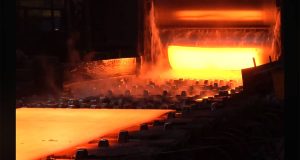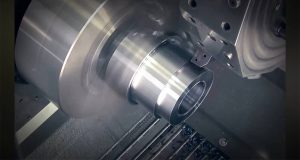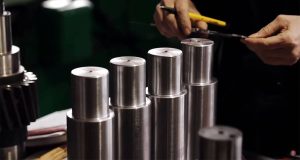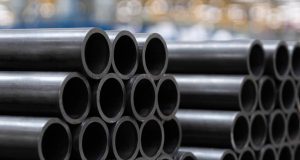What Ductility Means in Material Science
Ductility describes how far a metal can stretch, bend, or permanently change shape before it fractures. A material with good ductility can be formed with less resistance, shaped more easily at lower temperatures, and worked without sudden cracking. This makes it valuable for shaping, drawing, forming, or any process that requires controlled deformation under load.
Key Factors That Affect Ductility
- Chemical composition of the alloy
- Grain size
- Temperature during forming
- Heat treatment history
- Presence of impurities
- Strain rate during use
- Internal flaws or microstructural issues
How Ductility Is Measured
In industrial and engineering environments, ductility is typically measured using a tensile test. The sample is stretched until it breaks, and the permanent deformation—either elongation or reduction in cross-section—is recorded. Ductile materials show a smooth, gradual slope on a stress–strain curve and remain in the plastic region longer than brittle materials.
Elastic vs. Plastic Deformation
When force is applied to a metal, it first responds elastically, meaning it returns to its original shape after the load is removed. If the force continues to rise, the metal enters the plastic region, where deformation becomes permanent. Ductile materials remain in this region for a longer period, while brittle materials fracture soon after surpassing the elastic limit.

Common Indicators of Ductility
| Indicator | What It Shows |
|---|---|
| Elongation (%) | How much the sample stretches before fracturing |
| Reduction in Area (%) | How much the cross-section narrows during testing |
| Stress–Strain Curve Shape | Longer plastic region indicates higher ductility |
| Necking Behavior | Visible thinning before the break point |
| Fracture Appearance | Rough, fibrous surfaces typical of ductile failure |
Why Ductility Matters During Manufacturing
Ductility allows metal to be shaped, drawn, bent, and formed without unexpected failure. Processes such as forging, extrusion, stamping, and coiling rely on predictable deformation. Higher ductility also increases safety by allowing structures or components to deform slowly instead of failing without warning.
Test Your Knowledge: Take Our “What Is Ductility?” Quiz
Want to see how much you’ve learned about ductility and metal behavior? Visit SawbladeUniversity.com and try our quick “What Is Ductility?” quiz. It’s a fast way to check your understanding, reinforce key concepts, and sharpen your material science skills. Give it a try and see how you score!
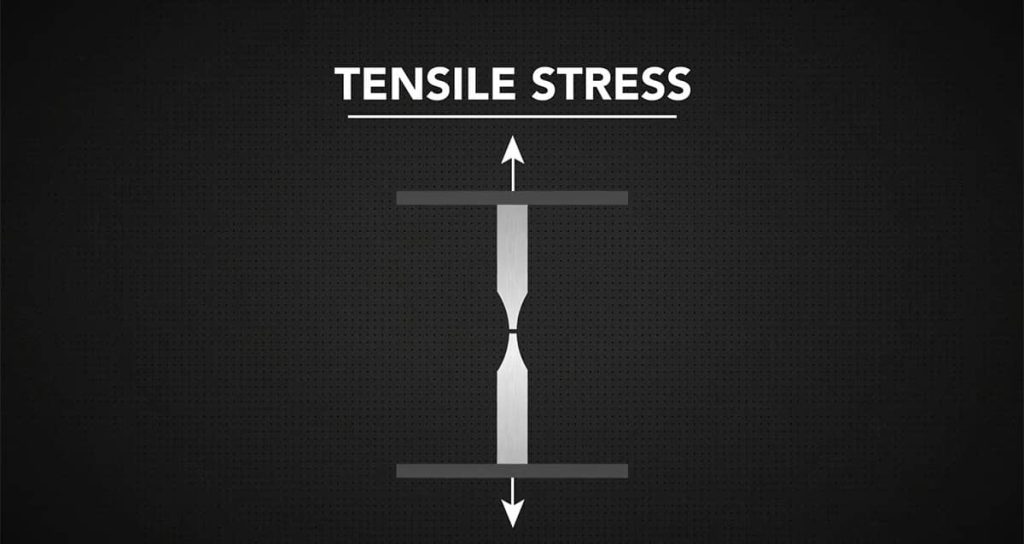
Materials Known for High Ductility
- Gold
- Copper
- Aluminum
- Mild steel
- Nickel alloys
- Platinum
- Certain stainless steels
Examples of Low-Ductility Materials
Materials with low ductility break shortly after they exceed their elastic range because they cannot undergo much plastic deformation. These include cast iron, hardened tool steels, and many ceramics. They offer strength but cannot stretch or thin out before fracturing.
How Temperature Influences Ductility
- Higher temperatures generally increase ductility
- Lower temperatures reduce deformation ability
- Some alloys experience sharp transitions near specific temperatures
- Processing methods can be adjusted to match temperature behavior
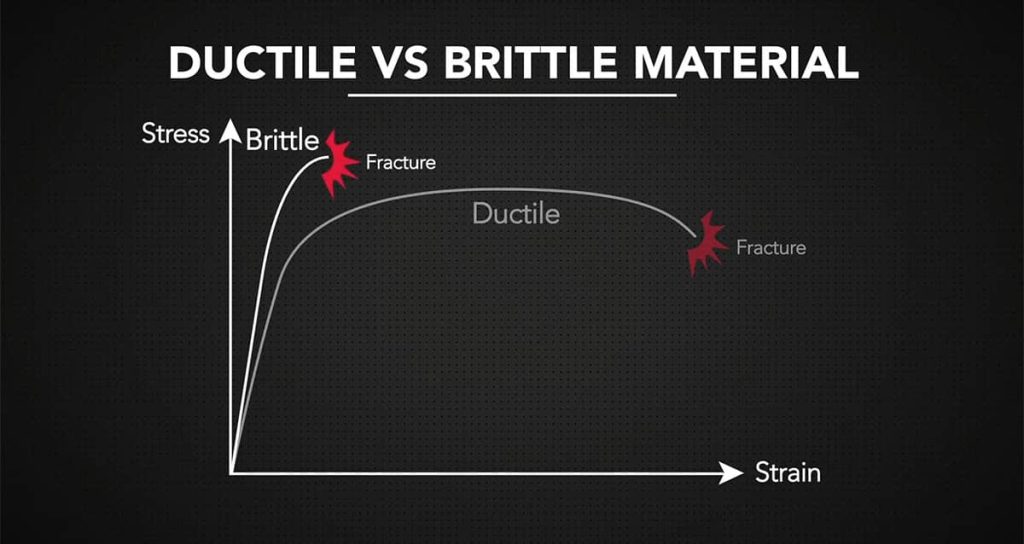
Learn More About Metal Strength and Failure Behavior
If you want a clearer understanding of how metals respond to different types of forces, be sure to read our related guide, “Shear Strength vs. Tensile Strength: What’s the Difference and Why It Matters.” It explains how each strength type is measured, when each one matters in real applications, and how they influence material selection for manufacturing and structural design. It’s an excellent next read for anyone looking to improve accuracy in choosing and evaluating metals.
Improving Ductility in Metals
- Changing alloy elements
- Applying specific heat treatments
- Refining grain structure
- Reducing impurities
- Modifying cooling rates
- Selecting appropriate forming temperatures
A clear understanding of ductility helps engineers, fabricators, and metalworkers predict how a material will behave under different loading conditions. Knowing how much permanent deformation a metal can withstand supports better material selection, safer designs, and improved reliability across manufacturing processes.



